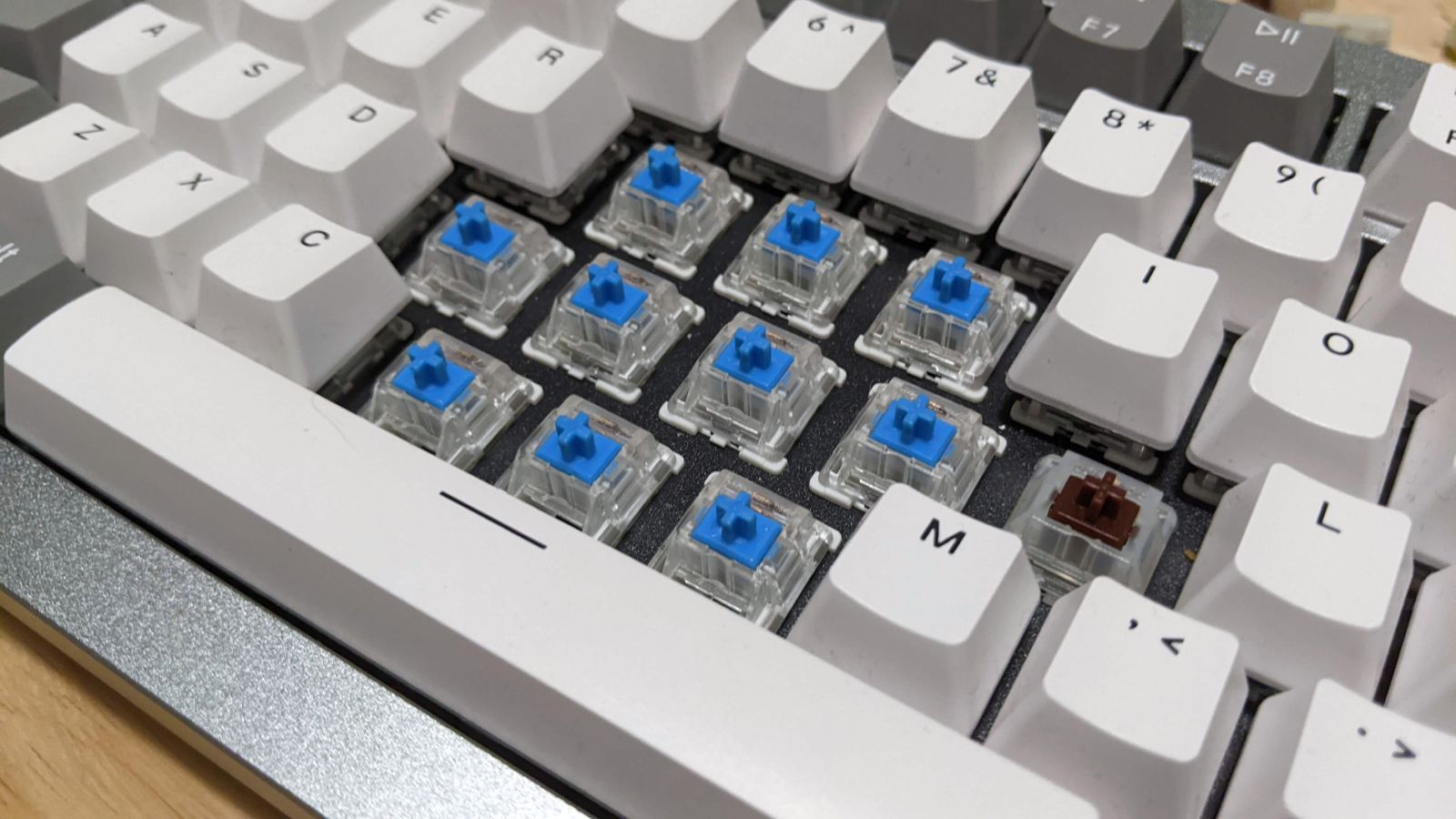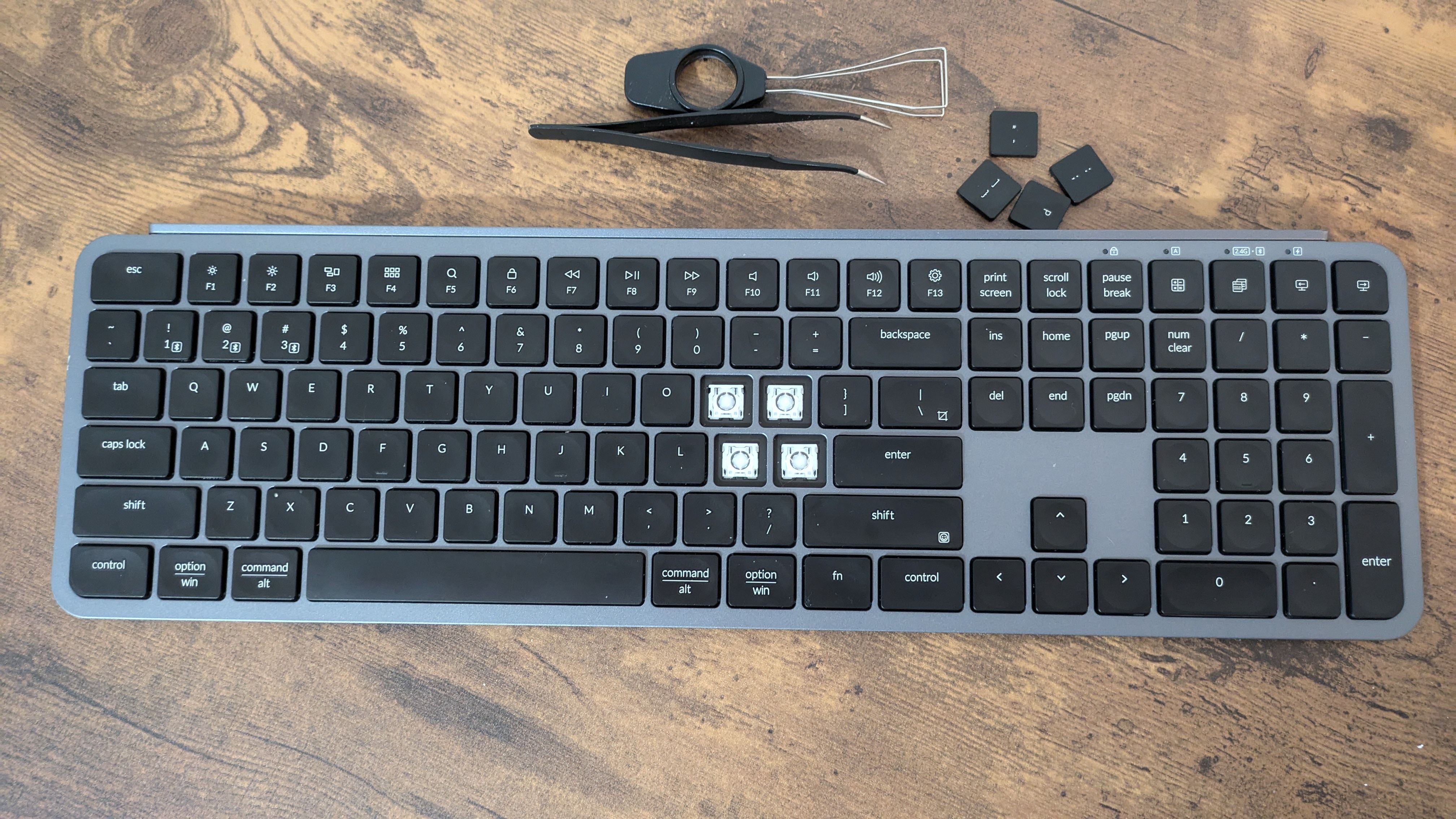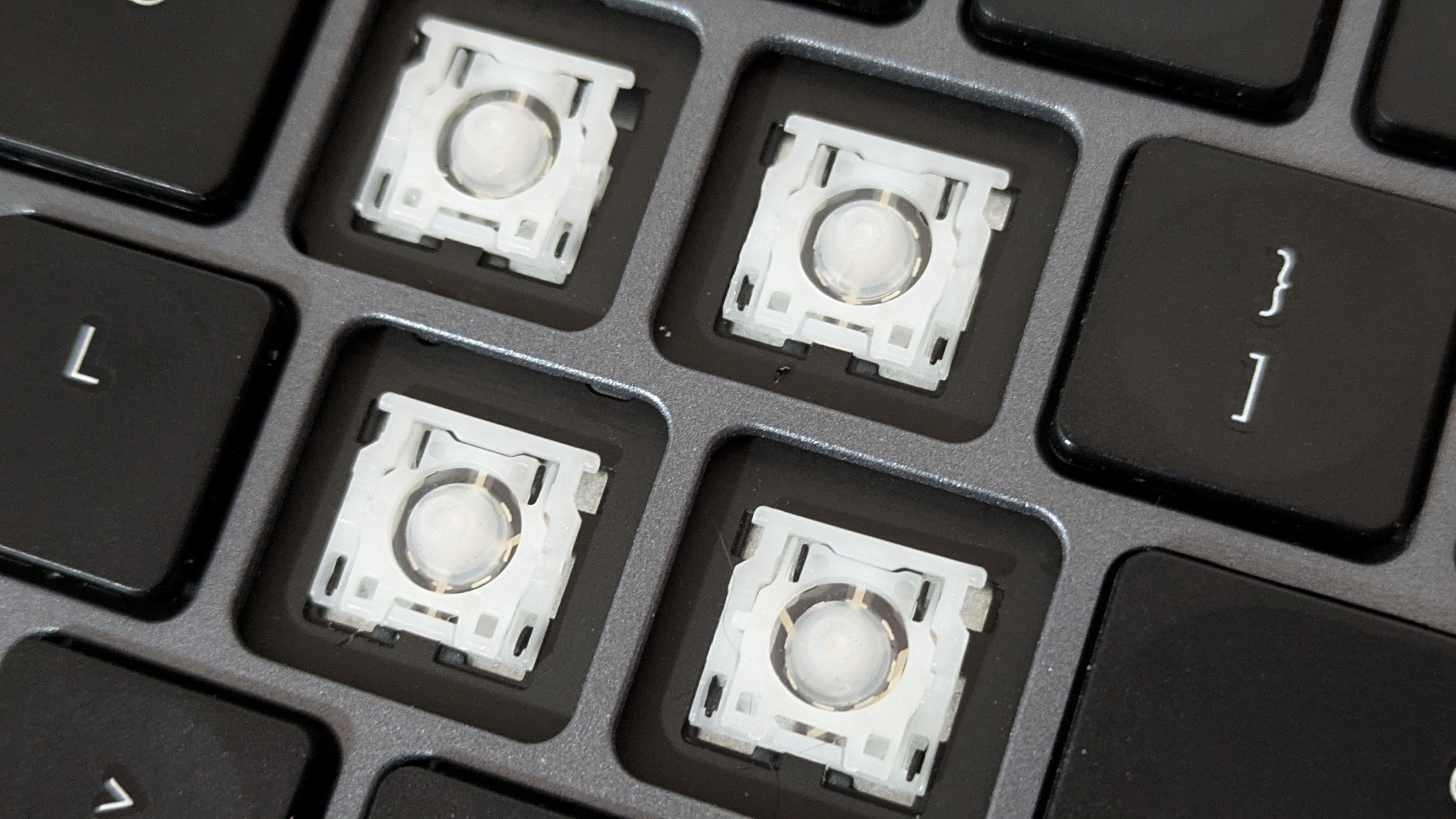Tech News
What are Scissor Switches?
Key Takeaways
While all keyboards look similar, and seem to function in pretty much the same way, beneath the keycaps there are myriad different ways to design a keyboard. While everyone's always harping on about mechanical keyboard switches, scissor switches have an important place in the keyboard universe.
Mechanical Keyboards Vs. Membrane Keyboards
Before we look at scissor switches in particular, it's worth quickly comparing the two main approaches to keyboard actuation.
In a mechanical keyboard, every key has its own dedicated mechanism to actuate the electronic circuit. People love these keyboards for the feedback and clicky, tactile feel. Mechanical keyboards have become almost a hobby unto themselves. With people designing their own keyboards and spending hours debating what the best switch design is for these loud but proud decks.
Membrane keyboards, on the other hand, use a different approach. Underneath the keys, there's a single large flexible layer with membrane domes. When a key is depressed, it pushes down on the membrane, completing the circuit and registering the key. Membrane keyboards are much more common than mechanical ones. They are generally much cheaper, and perhaps most importantly, they are much, much quieter. Thanks to their slim profile and light weight, membrane keyboards are especially popular in laptops. However, they lack that clicky tactile feedback that people have come to love.
Scissor Switches Are On Membrane Keyboards
While you might think a "scissor switch" has to do with mechanical keyboards, this is actually a type of membrane keyboard switch. It's an improvement on the original simple membrane keyboard design and a membrane keyboard that makes use of scissor switches feels significantly better to type on.
The reason these switches are called "scissor" switches is obvious once you actually take a look at one. As you can see, the mechanism under each key looks like a pair of scissors. The two pieces interlock in that scissor arrangement so that when you press on the key it remains stable, unlike the wobbly keys you get on an old-school membrane keyboard.
Scissor switches improve membrane keyboards to the point where most people probably don't need the further benefits of mechanical keyboards. Indeed, unless you're a bit of a keyboard fanatic, chances are that all you've ever typed on is a membrane keyboard with scissor switches, or another closely related design.
What Are Scissor Switches Used For?
As mentioned, the main appeal of scissor switches is that you can make really thin, low-profile keyboards. Mechanical keyboards like the original IBM Model F and Model M weren't really practical to adapt to laptops, so membrane keyboards with scissor switches are a great fit, literally.
Then again, things have come somewhat full circle and mechanical keyboards have in turn become slimmer themselves. So you can now get some laptops with built-in mechanical keyboards. However, most laptops still use the membrane and scissor switch combo.
Apple tried to make their keyboards even thinner with a new type of switch called the "butterfly" switch, but this turned into a bit of a disaster and today's MacBooks have returned to the tried-and-tested scissor switch approach.
That's not to say that everything's peachy with the scissor switch design. This type of keyboard is notoriously hard to repair. Even if the membrane is intact, scissor switches are tiny and delicate, and a pain to work with. With mechanical keyboards you can swap or repair just about anything, but if one key on a scissor switch keyboard is broken, it's often cheaper and easier to just replace the whole thing.
Scissor switch keyboards offer a good middle-ground between pure membrane designs and full mechanical keyboards. There are other alternatives as well. For example, some hybrid mechanical switches use a mechanical switch combined with a membrane dome to give the best of both worlds.
There are also opto-mechancal keyboards that use optical sensors to register keystrokes instead of an electrical connection. As long as we have a need for keyboards, they'll keep evolving, but for the time being, scissor switch membrane keyboards are going nowhere.
When you subscribe to the blog, we will send you an e-mail when there are new updates on the site so you wouldn't miss them.


 Eric
Schoon
/
How-To
Geek
Eric
Schoon
/
How-To
Geek Kris
Henges
/
How-To
Geek
Kris
Henges
/
How-To
Geek Kris
Henges
/
How-To
Geek
Kris
Henges
/
How-To
Geek
Comments